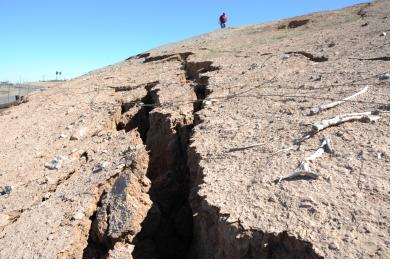GPS devices can be a powerful tool to quickly pinpoint the location and magnitude of strong earthquakes. In order to improve the use of GPS in responding to major earthquakes, the new Real-time Earthquake Analysis for Disaster (READI) Mitigation Network uses real-time GPS measurements from nearly 500 stations throughout California, Oregon and Washington to test the application of this space-based technology for earthquake response. When a large earthquake is detected, GPS data are used to automatically calculate its vital characteristics including location, magnitude and details about the fault rupture.
"With the READI network we are enabling continued development of real-time GPS technologies to advance national and international early warning disaster systems," said Craig Dobson, natural hazards program manager in the Earth Science Division at NASA Headquarters in Washington. "This prototype system is a significant step towards realizing the goal of providing Pacific basin-wide natural hazards capability around the Pacific 'Ring of Fire.'"

